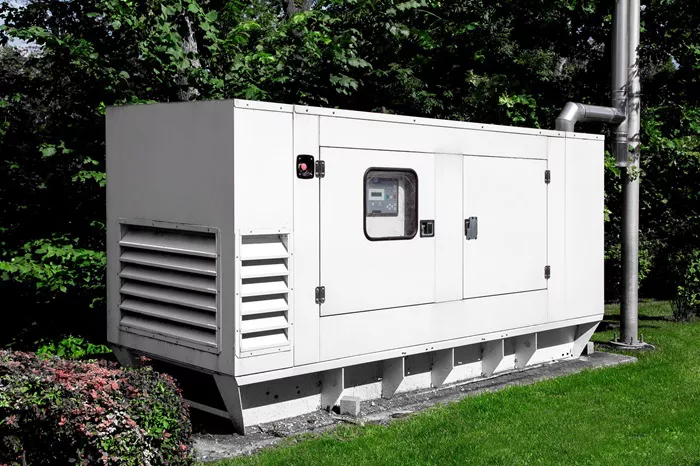Generators and light towers are essential for providing power and illumination in various settings, from construction sites to emergency backup systems. Proper refueling is critical to ensure their reliable operation. This guide will explain when and how to refuel these machines, the types of fuel to use, and best practices for maintaining their performance.
Why Refueling Generators and Light Towers is Important
Refueling generators and light towers at the right time ensures uninterrupted operation. Running out of fuel can cause downtime, damage equipment, and lead to costly repairs. Proper refueling also improves fuel efficiency and extends the lifespan of your machines.
Types of Fuel Used in Generators and Light Towers
Generators and light towers typically use one of the following fuels:
Diesel: Most common for industrial and heavy-duty applications. Diesel is efficient and provides long runtimes.
Gasoline: Used in smaller, portable generators. Gasoline is widely available but less efficient than diesel.
Propane: Clean-burning and ideal for indoor use. Propane is stored in tanks and is less prone to fuel degradation.
Natural Gas: Used in stationary generators. Natural gas is cost-effective and requires a continuous supply line.
Choosing the right fuel type depends on your equipment and operational needs. Always refer to the manufacturer’s guidelines for fuel recommendations.
When to Refuel Generators
Refueling generators at the right time is crucial for maintaining performance and avoiding breakdowns.
Here are key factors to consider:
1. Fuel Level Monitoring
Most modern generators have fuel gauges that indicate the remaining fuel level. Refuel when the gauge shows 25-30% capacity to avoid running out of fuel during operation.
2. Runtime Calculations
Calculate the generator’s runtime based on its fuel consumption rate and tank capacity. For example, if a generator consumes 2 gallons per hour and has a 20-gallon tank, it will run for 10 hours. Plan to refuel before the calculated runtime ends.
3. Operational Demands
High-demand situations, such as powering heavy machinery or during emergencies, may require more frequent refueling. Monitor fuel levels closely during these periods.
4. Environmental Conditions
Extreme temperatures can affect fuel efficiency. In cold weather, generators may consume more fuel to maintain performance. Adjust refueling schedules accordingly.
When to Refuel Light Towers
Light towers are often used in remote locations, making timely refueling essential.
Follow these guidelines:
1. Fuel Gauge Indicators
Like generators, light towers have fuel gauges. Refuel when the gauge shows 25-30% capacity to ensure continuous operation.
2. Runtime and Fuel Consumption
Light towers typically run on diesel and have varying fuel consumption rates. For example, a tower consuming 0.5 gallons per hour with a 10-gallon tank will run for 20 hours. Refuel before the calculated runtime ends.
3. Usage Patterns
If the light tower is used intermittently, refuel based on cumulative runtime rather than calendar days. This prevents fuel degradation and ensures reliability.
4. Environmental Factors
Outdoor conditions, such as wind and temperature, can impact fuel efficiency. Monitor fuel levels more frequently in harsh environments.
Best Practices for Refueling Generators and Light Towers
Proper refueling techniques ensure safety and equipment longevity.
Follow these best practices:
1. Turn Off Equipment Before Refueling
Always shut down generators and light towers before refueling to prevent accidents and fuel spills.
2. Use Clean Fuel Containers
Dirty or contaminated fuel can damage engines. Use clean, dedicated containers for refueling.
3. Avoid Overfilling
Overfilling can cause fuel spills and damage equipment. Fill the tank to 90-95% capacity to allow for fuel expansion.
4. Check for Leaks
Inspect fuel lines and connections for leaks before and after refueling. Address any issues immediately.
5. Store Fuel Properly
Store fuel in a cool, dry place away from direct sunlight. Use fuel stabilizers if storing for extended periods.
Signs That Your Generator or Light Tower Needs Refueling
Look out for these indicators to avoid running out of fuel:
Low Fuel Warning Lights: Modern equipment often has warning lights that signal low fuel levels.
Reduced Performance: A drop in power output or dimming lights may indicate low fuel.
Unusual Noises: Sputtering or irregular engine sounds can signal fuel starvation.
Fuel Gauge Readings: Regularly check the fuel gauge to monitor levels.
Risks of Delaying Refueling
Delaying refueling can lead to several problems:
Equipment Shutdown: Running out of fuel causes sudden shutdowns, disrupting operations.
Engine Damage: Fuel starvation can damage internal components, leading to costly repairs.
Safety Hazards: In emergencies, a lack of fuel can compromise safety and security.
Increased Costs: Downtime and repairs due to fuel neglect can be expensive.
How to Calculate Fuel Consumption
Understanding fuel consumption helps plan refueling schedules.
Follow these steps:
Check the Equipment Manual: The manual provides fuel consumption rates under specific loads.
Monitor Runtime: Track how long the equipment runs before needing refueling.
Calculate Consumption: Divide the total fuel used by the runtime to determine the consumption rate.
For example, if a generator uses 10 gallons in 5 hours, its consumption rate is 2 gallons per hour.
Maintenance Tips for Generators and Light Towers
Regular maintenance ensures efficient fuel use and extends equipment life:
Change Filters: Replace fuel and air filters as recommended by the manufacturer.
Inspect Fuel Lines: Check for cracks or leaks in fuel lines and connections.
Clean Components: Remove dirt and debris from engines and fuel systems.
Test Equipment: Run generators and light towers periodically to ensure proper operation.
Conclusion
Refueling generators and light towers at the right time is essential for their performance and longevity. By monitoring fuel levels, calculating runtimes, and following best practices, you can avoid downtime and costly repairs. Regular maintenance and proper fuel storage further enhance efficiency and reliability. Always refer to the manufacturer’s guidelines for specific refueling and maintenance instructions.
By following this comprehensive guide, you can ensure that your generators and light towers operate smoothly and efficiently, meeting your power and lighting needs without interruption.

